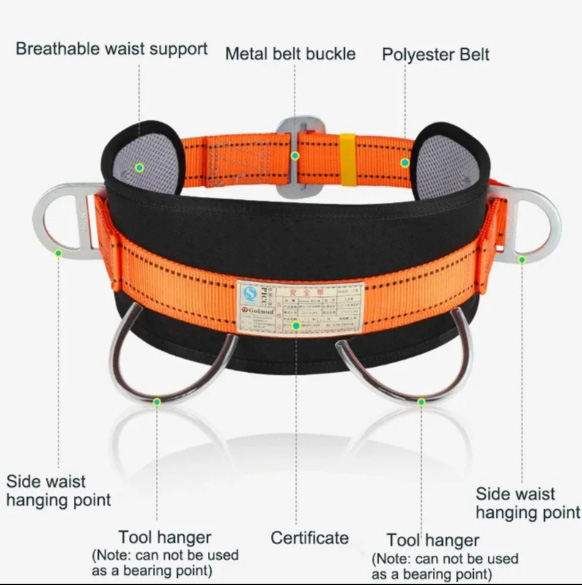When it comes to ensuring safety in various industries such as construction, oil and gas, and manufacturing, choosing the right safety harness is crucial. A safety harness is a vital piece of personal protective equipment that can prevent falls and protect workers at heights. With a wide range of options available in the market, selecting the most suitable safety harness can be overwhelming. Here are some key factors to consider when choosing a safety harness:
1. Compliance with Safety Standards
The first and most important factor to consider when choosing a safety harness is whether it complies with relevant safety standards. In the United States, safety harnesses should meet the standards set by the Occupational Safety and Health Administration (OSHA). Look for harnesses that are labeled as compliant with OSHA regulations to ensure that they meet the necessary safety requirements.

2. Type of Work Environment:safety harness
The type of work environment in which the safety harness will be used plays a significant role in determining the most suitable harness. Different industries have varying safety requirements, so it is essential to choose a harness that is specifically designed for the hazards present in your work environment. For example, if working in confined spaces, a harness with additional support and attachment points may be necessary.
3. Comfort and Fit
Comfort is key when it comes to wearing a safety harness for extended periods. A harness that is uncomfortable or does not fit properly can lead to reduced productivity and worker dissatisfaction. Look for harnesses with adjustable straps, padding, and breathable materials to ensure a comfortable fit. It is also important to consider the size and weight capacity of the harness to accommodate the individual wearing it.
4. Attachment Points and Features
Safety harnesses come with different attachment points and features depending on the specific requirements of the job. Consider the number and placement of attachment points on the harness to ensure that it can accommodate the necessary fall protection equipment such as lanyards and lifelines. Additionally, features such as quick-connect buckles, D-rings, and tool loops can enhance the functionality of the harness.
5. Durability and Quality
Investing in a high-quality safety harness is essential to ensure its durability and longevity. Look for harnesses made from robust materials such as nylon or polyester webbing that can withstand the rigors of daily use. Check for reinforced stitching, corrosion-resistant hardware, and proper maintenance guidelines to ensure that the harness remains in good condition over time.
6. Training and User Instructions
Proper training in the correct use and maintenance of safety harnesses is essential to ensure their effectiveness. Choose a harness that comes with clear user instructions and guidelines for inspection, donning, and doffing. Providing adequate training to workers on how to properly wear and care for their safety harness can help prevent accidents and ensure compliance with safety regulations.
In conclusion, selecting the right safety harness is a critical decision that can impact the safety and well-being of workers in various industries. By considering factors such as compliance with safety standards, the type of work environment, comfort and fit, attachment points and features, durability and quality, and training and user instructions, you can choose a safety harness that provides optimal protection and peace of mind for workers at heights.
